
What is Hip Resurfacing
Hip Resurfacing is an alternative technology to Total Hip Replacement that is aimed at treating painful conditions of the hip in younger, active patients.
How does it Compare to Conventional Hip Replacement?
In a conventional hip replacement the pain from a diseased hip is relieved by replacing the ball and the socket. The ball at the top of the thigh bone (femur) is removed to allow a stemmed component to be placed in the marrow cavity of the thigh bone. The stemmed component has a ball applied to the top. The ball articulates with the socket (acetabulum) that is fitted into the pelvis.

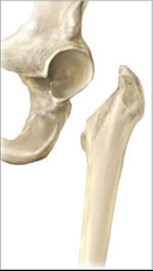
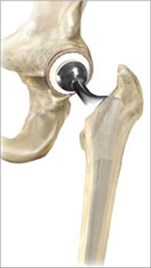

This X-ray shows a young and active patient who had both hips (bilateral) replaced with a ceramic-on-ceramic hip replacement (prior to the availability of the hip resurfacing systems).
While a hip replacement works well in many patients, it has shortcomings in patients who would like to be active and whose age is such that they would outlive the normal lifespan of a standard hip replacement (10 to 20 years). When a hip replacement fails, it frequently does so by loosening from the bone, which can then become thinner. This process is accompanied by pain and usually a revision hip replacement is recommended. A revision procedure is riskier and more difficult to perform than the first surgery as there is less bone to fix a new component to. In cases where the hip has been revised several times, this bone loss can be critical.
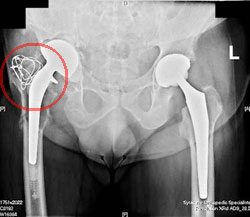
X-ray of a middle-aged man with significant bone loss (circled in red) around a failed right hip replacement (10 years after implantation). He has a well functioning left hip replacement of 2 years duration.
Hip Resurfacing Technique
Hip resurfacing is a technique that differs radically in the way the thigh bone is addressed. Instead of removing the ball at the top of the thigh bone (femur), it is shaved down to a peg (similar to a tooth cap). The peg is then suitably shaped to allow a metal ball to be placed around it. The pelvic side is not conceptually different than a hip replacement because both implants have an artificial shell fixed to the socket. It is on the thigh bone (femoral) side that bone is preserved.
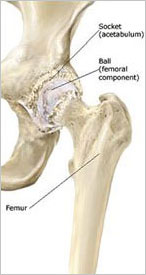
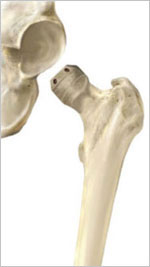
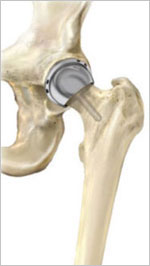
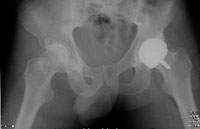
This X-ray shows a young and active patient who had a left hip resurfacing.
Potential Advantages of Hip Resurfacing over Hip Replacement:
- Preservation of bone on the thigh bone, potentially making revision surgery easier.
- Reduced risk for dislocation (where the ball disengages from the socket) due to the large size of the ball when compared to most hip replacements.
- Better stress distribution to the top of the femur by reducing the amount of stiff metal inside the marrow cavity.
- More resilient for activities of life such as sports, running, skiing etc.
- May last longer in younger patients than a full hip replacement.
Potential Disadvantages of Hip Resurfacing Over Hip Replacement:
- Only made in metal on metal articulation. Currently there are no ceramic hip resurfacings available although several companies are working on this.
- The metal-on-metal bearing produces metal debris that release metal (cobalt and chromium) ions into the body. To date, no long term ill effects of these ions have been documented on patients, but this is an area of intensive research.
- There are few data on what will happen to these devices beyond 8 years. It seems, however, that at this time point, patients who have received resurfacings do as well or better than similar patients who have received total hip replacements.
- There is a 1-2% risk of fracture of the femoral neck. This risk is greatest in older females with bone of sub-optimal quality.
- The surgery is more difficult and more exacting than hip replacement surgery and is therefore not performed by many surgeons.
